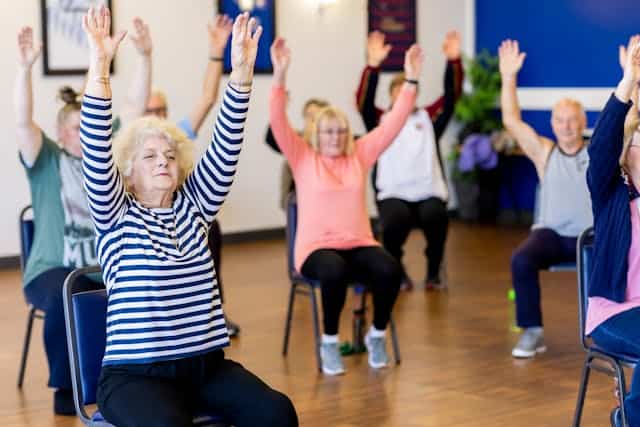
New Sedentary Behaviour Systematic Review Garnering Significant Media Attention
January 20, 2015
Author Summary of “Sedentary Time and Its Association with Risk for Disease Incidence, Mortality, and Hospitalization in Adults” paper, Published in the Annals of Internal Medicine (2015: 162:123-132)
March 11, 2015Today’s post comes from PhD Candidate Justin Lang. For media requests or further information on the study, please contact Justin directly at jlang
Background:
In recent years there has been an accumulation of evidence indicating that sedentary behaviors (i.e., sitting) are associated with negative health outcomes, such as cardiovascular disease, diabetes, and premature mortality. In light of this evidence, researchers are trying to develop creative interventions to reduce sedentary behaviors – one of which being point-of-decision prompts (PODP). PODPs are used to inform individuals about the health benefits associated with a specific behavior. For instance, PODP are used in the workplace to remind people to stand throughout the day; they are also used to encourage individuals to use the stairs rather than the elevator.
We were interested in testing PODPs as an intervention to encourage standing during the Global Summit on the Physical Activity of Children and Youth conference (Toronto, Ontario, May 2015). Conferences are an excellent venue for sedentary behavior research as they typically involve periods of uninterrupted sitting, especially during oral presentation. Thus, the purpose of our study was to determine if a PODP would influence the proportion of attendees standing during oral presentations.
What did we do?
We selected 12 of 16 oral presentation sessions that took place during the conference. Each presentation session included 4 different, 15 minute, oral presentations on various topics related to physical activity. We then randomly assigned 6 presentation sessions to the intervention group and the remaining 6 presentation sessions to the control group.
During the intervention group sessions we asked the facilitators to read the prompt (see below) at the beginning (before the first presenter) and middle (after the second presenter) of the session.
Prolonged sitting is associated with increased health risks. We encourage you to reduce and/or interrupt your sedentary time while attending the Global Summit on the Physical Activity of Children. Please feel free to stand during this presentation session.
Facilitators for the control group sessions were asked not to address sitting and/or standing, and to not mention the existence of the study.
During all 12 sessions, researchers counted the number of participants at the beginning (first 10 min), middle (30-40 min), and end (50-60 min) of the session. Each count consisted of (a) the number of individuals in the room and (b) the number of standing individuals at any time during the count period.
What did we find?
The results of this study indicated that individuals were significantly more likely to stand during presentation sessions that included the PODP (see Figure 1). Roughly 60% more participants stood during the sessions with the PODP, when compared to the control group.

Lang et al., 2015 (Source)
Take-home messages:
Our study suggests that frequent prompts and/or permission to stand results in a great proportion of people choosing to do so. This is an exciting finding because it supports the versatility of PODPs. Prompts represent an equitable population health intervention. In other words, they have the potential to influence a large group of individuals equally. In addition, PODPs have little to no cost associated with their implementation.
About the author:

Justin Lang
Justin Lang is a PhD candidate in the Population Health program at the University of Ottawa and holds a research assistantship with the Healthy Active Living and Obesity Research Group at CHEO. His PhD research focus is on the geographic variation of physical fitness in children and it’s relationship with childhood obesity. Justin also holds a Mitacs internship which provides him with the opportunity to further explore physical fitness in the Ottawa community.
Reference:
Lang, J. J., McNeil, J., Tremblay, M. S., & Saunders, T. J. (2015). Sit less, stand more: A randomized point-of-decision prompt intervention to reduce sedentary time. Preventive Medicine. Available here.




